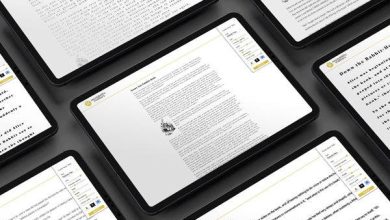How Bridgestone re-aligned its digital marketing with Adobe Experience Cloud

How Bridgestone re-aligned its digital marketing with Adobe Experience Cloud
Bridgestone may be the world’s largest tire and rubber company, but for Bridgestone Americas VP of digital marketing, Jeffrey Lack, that’s only the tip of the iceberg. The company is now doubling down on its digital customer experience and product innovation, establishing itself as a fully integrated, sustainable mobility solutions provider.
“If a truck in your fleet goes down because of a flat tire, that’s time and money lost. As a consumer driver, tires are the only part of a vehicle that connects with the road,” Lack says. “The technology in our products is critical to the navigation and safe operations of vehicles everywhere, and my team’s goal is to match the quality of our products with an equally advanced customer experience.”
Bridgestone’s marketing team began its digital transformation in 2013, working with Adobe to align its technology stack across 11 lines of business. Digital marketing was already a top priority for the business, representing more than 30 percent of total marketing spend, but the advances it made in recent years have completely flipped the script. Today, digital channels are the most important part of Bridgestone’s go-to-market plans, accounting for a large portion of Bridgestone’s sales and helps it to attract new customers each day.
Contents
Time to get back on track
Many factors drove Bridgestone to reset its digital marketing approach. Chief among these was a lack of alignment between business units, which led to inconsistent customer experiences. The use of different MarTech platforms by each team only compounded the issue and left Bridgestone with a highly fragmented marketing operation that wasn’t fit for its ambitious digital plans.
Going back to 2013, Bridgestone’s Retail Operations alone had 17 different websites across its four retail automotive service brands (for example, Firestone Complete Auto Care). As Lack recalls, it took a team of 35 people to code and update the site each time a change was required, no matter how small.
“We took an honest look at ourselves in the mirror and realized we didn’t have the right pieces to move as quickly as we wanted to. Instead, we had too many pieces working against each other,” says Lack. “Our online experience was as disparate and dated as our MarTech stack, which meant that we had to build entirely new websites just to serve customers using their phone or tablet.”
Installing a digital engine
To close these gaps and advance its digital plans, Bridgestone launched a comprehensive transformation program. Aptly named CB2, which stands for Cross-Business and Cross-Border, the program was designed to integrate Bridgestone’s digital approach and tools across the business and to turn its digital marketing efforts into a competitive advantage.
The first step was to consolidate its legacy marketing technologies down to just one set of robust tools anchored in the Adobe Experience Cloud as its MarTech stack. Bridgestone has since rolled out Adobe Experience Manager across its business, and they are at various stages of implementing additional solutions such as Adobe Analytics for measurement and Adobe Audience Manager to segment its experience for different customer segments. In addition, Adobe Target will help the company drive personalization efforts, while Adobe Campaign will orchestrate messages across channels, from email to mobile.
“These technologies aren’t just helping us get closer to customers, they’re empowering us to take a more data-driven approach to marketing and measurement, which is transforming the way we work internally,” says Lack.
Indeed, Bridgestone has adopted the Data Driven Operating Model (DDOM) to drive its CB2 program forward. “Our philosophy is that if we can measure it, we can manage it,” says Lack. “With a single view of our data, we can create reports to track the health of every system in our marketing stack, with a focus on key performance metrics and new technology adoption.”
Getting on the fast-track
Bridgestone noticed improvements to its digital marketing almost immediately after switching to a single-stack approach. Just one year after consolidating its systems onto Adobe Experience Cloud, the company has saved the company millions in operational costs and stripped considerable time from its system upkeep.
Bridgestone went live with its first four websites in 2015, supporting sales for two lines of business in two countries and leading to 250,000 incoming calls from customers. Just five years later, the company has launched 68 websites with its Adobe marketing stack, supporting 14 business units in 19 countries. Most importantly, 50 million customers visited Bridgestone’s website in 2020, generating 25 million retail leads.
“Most customers now start their buying journey online. The COVID-19 pandemic has only accelerated the trend, with virtually every sale coming from a digital lead. Thankfully, we were prepared to accommodate this shift and give customers the flexibility to choose how they engage with us,” says Lack.
Lack and his team know this is only the beginning of Bridgestone’s transformation. The aligned marketing stack will also help the company build new simplified shopping experiences. Using Adobe Target and Adobe Analytics to test and refine its digital experiences, Bridgestone will be better positioned to share relevant and timely information with buyers that will make their purchase easier.
“We need to make sure Bridgestone is out there looking for people who need tires and making it easy for them to research and buy them on any channel,” says Lack. “It takes multiple steps for a customer to complete a purchase after finding the product they want on our website, and we are committed to bring that figure down significantly.”
“Every time you add a step to the purchasing process, you lose up to 30 percent of your potential buyers. This isn’t just about Bridgestone’s success, it’s also about supporting our affiliated dealers and retail partners with a more streamlined customer experience that keeps shoppers engaged”.
Driving side-by-side with Adobe
When Bridgestone first laid out the plans for CB2, it knew it wanted more than just a technology vendor to supply its marketing stack. The company needed a partner that would advise and grow with the business as its omnichannel experience became more sophisticated. Bridgestone chose Adobe for its best-in-class technology, but also for its partnership mindset and commitment to working side-by-side with the company’s marketing stakeholders.
“Working with Adobe has been a case of 1+1 = 3 at every turn. Whenever we join forces to add a new solution or capability to our digital infrastructure, the returns are greater than the sum of their parts,” says Lack.
Looking back on Bridgestone’s transformation so far, Lack reflects on what he has learned when it comes to choosing the right partner and fostering a transformation culture across the organization. For Bridgestone, aligning teams and stakeholders around new ways of working was as important as implementing the integrated marketing stack itself.
“Our people are the real drivers behind our success,” says Lack. “Getting here wasn’t always easy, and some of the early changes we made took some convincing, but now that we’ve climbed the mountain and get to ski down the other side, we’re having a lot of fun. The more we improve, the more momentum we build and the faster we all get to evolve together.”
Source : Adobe








